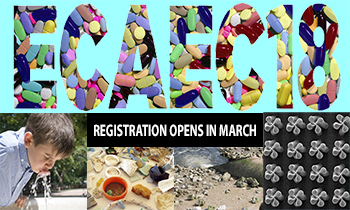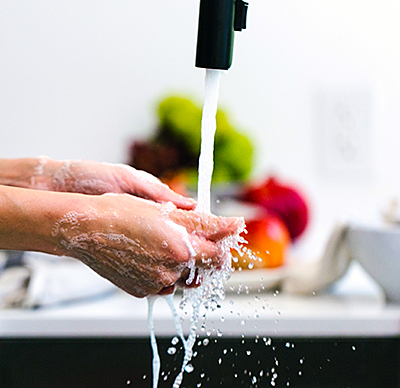WRITTEN BY: Katherine Gardiner, ISTC staff

A ban on the use of 24 antiseptic ingredients, including triclosan, for use in health care settings will take effect at the end of this year, the U.S. Food and Drug Administration (FDA) announced last month. That extends a 2016 ban on Triclosan, and other active ingredients, from use in consumer products.
The action is the latest development in a long road of coping with the competing rights and responsibilities of marketplace innovation, regulatory power, public health, and rapid advances in our scientific ability to detect such compounds.
Triclosan was patented in 1964 as an antibacterial and antifungal agent by the Swiss company Ciba-Geigy. Worldwide production and use began in the early 1970s. Just 14 years later, the compound was detected in U.S. wastewater, river water, and sediment and was labeled as an environmental contaminant. The FDA proposed banning the use of triclosan in soaps in 1978, but the proposal was never finalized.
Since then triclosan and other antibacterials have continued to find their way into many consumer products. For example, Hasbro, the maker of Playskool toys, was fined in 1997 for false advertising because they claimed their toys made with antibacterials were safer for kids than those without.
Present in antibacterial soaps, toothpastes, and body washes, triclosan is considered a Pharmaceutical and Personal Care Product (PPCP), which the Water Quality Association defines as “products used by individuals for personal health/well-being or for cosmetic purposes.” PPCPs have been identified as emerging contaminants of concern by the U.S. Environmental Protection Agency because little is known about their impact on the environment or their risks to human health when released into the ecosystem.
The Natural Resources Defense Council (NRDC) sued the FDA in 2010 to force a decision on triclosan and other antibacterials. Four years later, the U.S. Geological Survey (USGS) supported the FDA’s original findings by reporting triclosan as one of the top contaminants of emerging concern detected in biosolids. The FDA finally made the decision to ban triclosan in consumer products in 2016; now in 2018, this ban will be extended to the medical industry.

Why all the concern? They are pervasive. The widespread use of triclosan and other antibacterials has left residues in our environment, as well as in our bodies. Using bio-monitoring, triclosan residue was detected in 75 percent of Americans over six years old. Thought to be absorbed through the skin, tests have found traces of triclosan in human blood, urine, and breast milk.
Also research at ISTC and elsewhere have shown PPCPs can act as endocrine disruptors (EDCs), which alter hormone functions. Animal studies have shown that triclosan alters the way hormones work in the body, which is alarming considering potential impacts on human health. To spread awareness of the most recent emerging contaminant research, policies, and education, ISTC is hosting its third conference on emerging contaminants this June 5-6.
ISTC has also sponsored research to study the impact of triclosan on the environment. A three-year study ran from 2009 to 2012 and involved researchers analyzing two rivers in the Chicago area receiving effluent from wastewater treatment plants. Effluent from wastewater treatment plants can serve as a point source for a range of pollutants, including PPCPs. When analyzing the rivers, researchers found that increased exposure to triclosan was linked to both an increase in triclosan resistance and a decrease in biodiversity within the benthic bacterial communities. These results show that the common and widespread use of triclosan could have negative ecological consequences.
Further laboratory studies have matched ISTC’s suggestion that triclosan may contribute to bacterial resistance to antibiotics. Antibiotic resistance has significant impacts to human health, as it could diminish the effectiveness of some medical treatments, including antibiotic treatments.
Despite being used for the past four decades, manufacturers have proven neither the effectiveness nor the safety of long-term use of triclosan. The FDA has determined that antibacterial soap is no more effective than plain soap and water and challenged the industry to demonstrate otherwise.
Excluded from the new regulative action are six antiseptic active ingredients: ethyl alcohol, isopropyl alcohol, povidone-iodine, benzalkonium chloride, benzethonium chloride, and chloroxylenol. The FDA said further research is needed before commenting on the safety or effectiveness of these six ingredients.
The new FDA rule will go into effect Dec. 20, 2018.
#ECAEC18 co-sponsors: @ISTCatUIUC, @UCRiverside, @ILINSeaGrant, @CEEatIllinois

